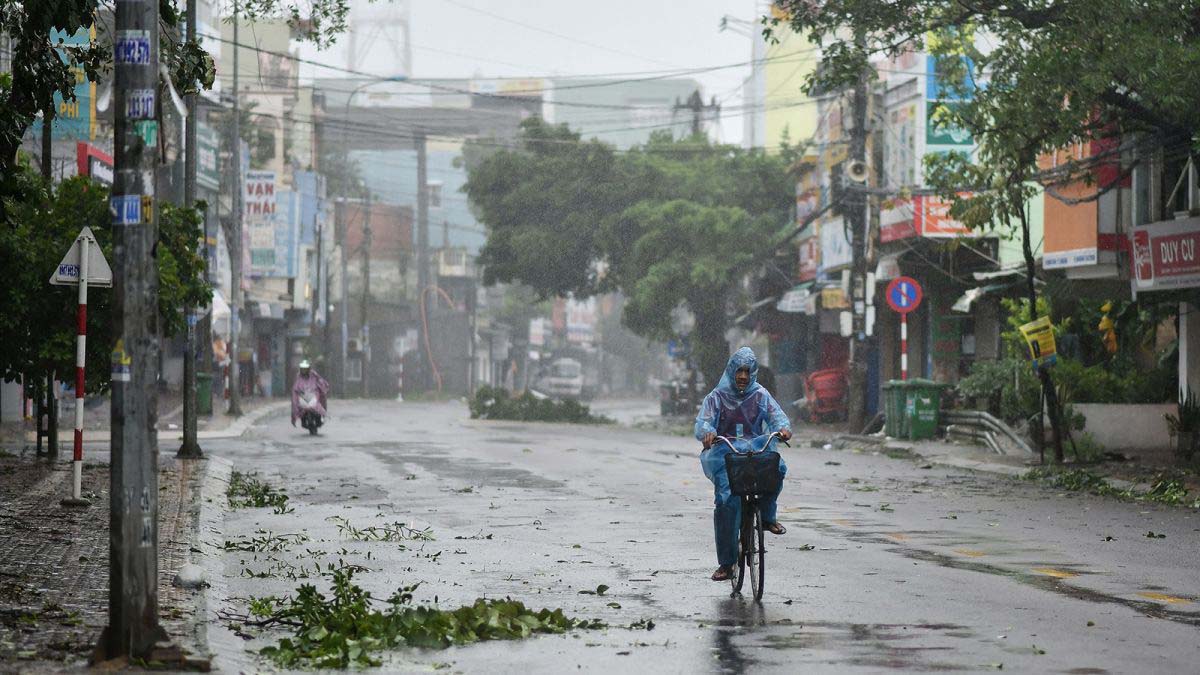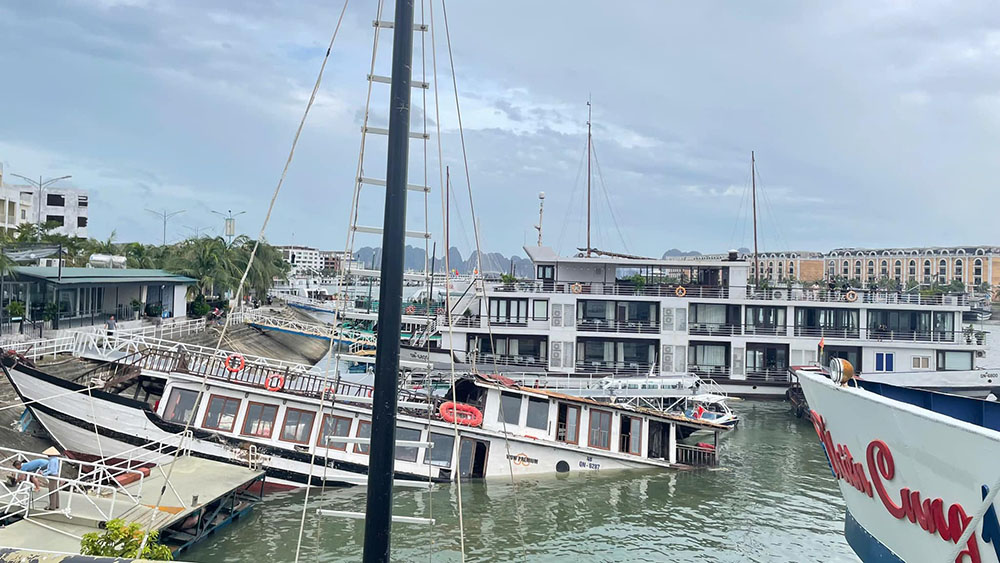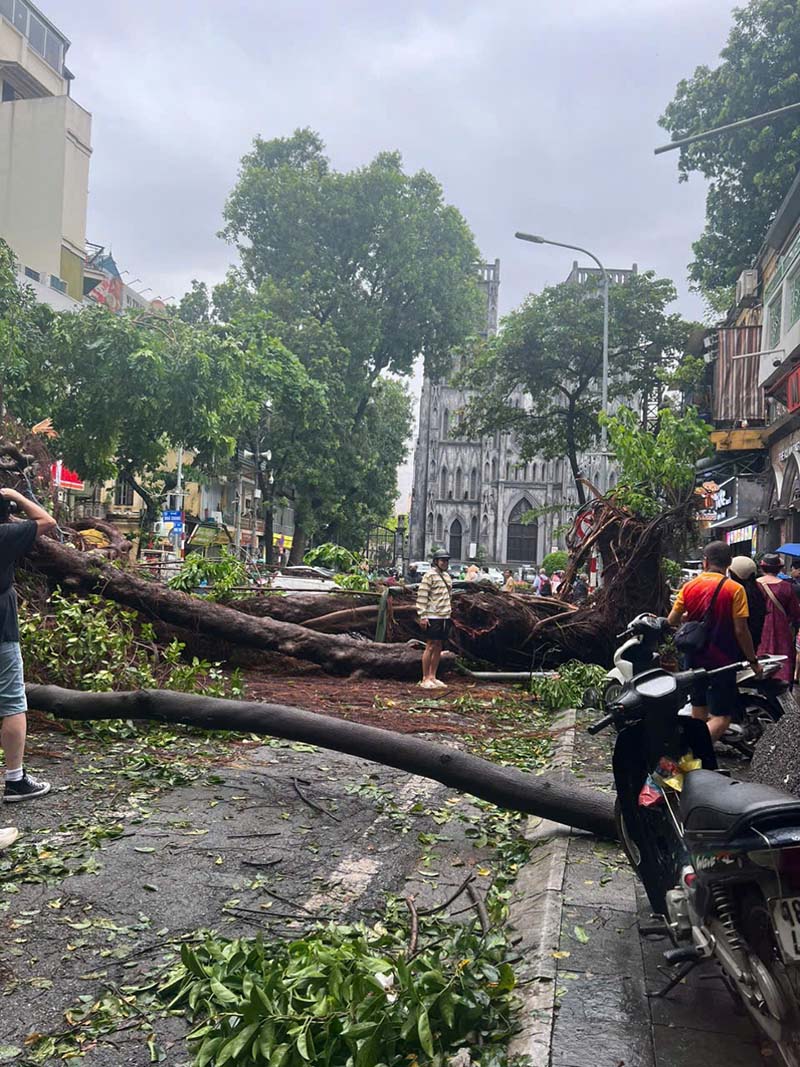Typhoon season in Vietnam
On average, Vietnam faces around 5 to 10 typhoons annually, with about 2 to 3 of them making landfall and significantly impacting the region. Due to Vietnam's extensive coastline that stretches across different latitudes, the timing and location of typhoons vary throughout the year.
North Vietnam
In the Northern provinces like Halong and Hai Phong, the typhoon season spans from July to October, coinciding with the summer and early autumn. This period is marked by heavy rainfall and high temperatures ranging from 28 to 38°C. Besides the coastal regions, the mountainous and lowland areas are also at high risk of flooding due to heavy rain days.
Typhoons in North Vietnam typically last between 1 to 3 days, bringing torrential rain, water levels rising by 0,3 to 2 meters, strong winds reaching up to 100 km/h (level 10), with gusts of up to 115 km/h (level 12), causing rough seas or landslides in mountainous areas.
Central Vietnam
The Central provinces usually experience typhoons from September to December, which also happens to be the rainy season. Central Vietnam endures the brunt of typhoons and floods each year, with North Central provinces (such as Da Nang, Hue, Hoi An, Quang Binh, and Nghe An) being more affected than South Central ones (like Nha Trang and Quy Nhon).

Typhoon season in Vietnam with heavy rain, hard wind, falling branches
Typhoons in Central Vietnam often last from 3 to 5 days, accompanied by heavy rain, and strong winds reaching 133 km/h (level 13), with gusts up to 162 km/h (level 14), causing severe flooding that can last for a month. Floodwaters can rise as high as 12 meters, sweeping everything in their path.
South Vietnam
As you move further South, typhoons generally diminish in strength and frequency. While the Northern and Central regions are battered by storms from May to December, South Vietnam remains largely unaffected. However, if you plan to visit Phu Quoc Island between May and September, be mindful of the rainy season and the rough seas during this time.
Advice for Travelers
If you are considering a trip and are concerned about typhoon season in Vietnam, here are some tips and information to keep in mind:

Halong Cruises sank at Tuan Chau whalf after super storm na Yagi in Sept 2024
-
Choose the right time and place: Southern Vietnam is a safe bet year-round, or you can plan your travels across Vietnam during the dry season when typhoons are unlikely.
-
Check the weather forecast: Always monitor weather updates before your trip and be prepared to adjust your plans if necessary.
-
Purchase travel insurance: It is always wise to have travel insurance for added peace of mind.
-
Pack smart: Keep your belongings light and secure, with waterproof protection.
-
Avoid islands during typhoon season: You might get stranded due to boat operations being suspended.
-
Do not go outside during the storm: You could get sick, lost, or hurt by falling branches or other objects.

In Hanoi, The biggest tree in front of the Cathedral fell down by super storm Yagi in Sept 2024
Though the typhoon season in Vietnam lasts several months, the main issues you might encounter will be heavy showers and potential flooding. The chance of experiencing a severe typhoon during your trip is relatively low, even in the storm season, as only 2 to 3 typhoons per year actually make it deep inland. It usually only affects some areas.
Typhoons can often be predicted up to a week in advance, giving you ample time to prepare. If you find yourself unable to relocate at that time, the most important thing is to stay in a safe shelter and follow local authorities' instructions.
To gain more insights, navigate to our post about best time to visit Vietnam!
While typhoon season in Vietnam may not be overly dangerous if you are indoors, it can still pose risks and disrupt your travel plans. It is best to avoid them whenever possible. With proper preparation or early relocation, you can easily steer clear of typhoons and enjoy a safe and pleasant journey in Vietnam. We wish you a lucky and peaceful trip to Vietnam. Feel free to check out our Vietnam tours and leave a message if you need any advice!







